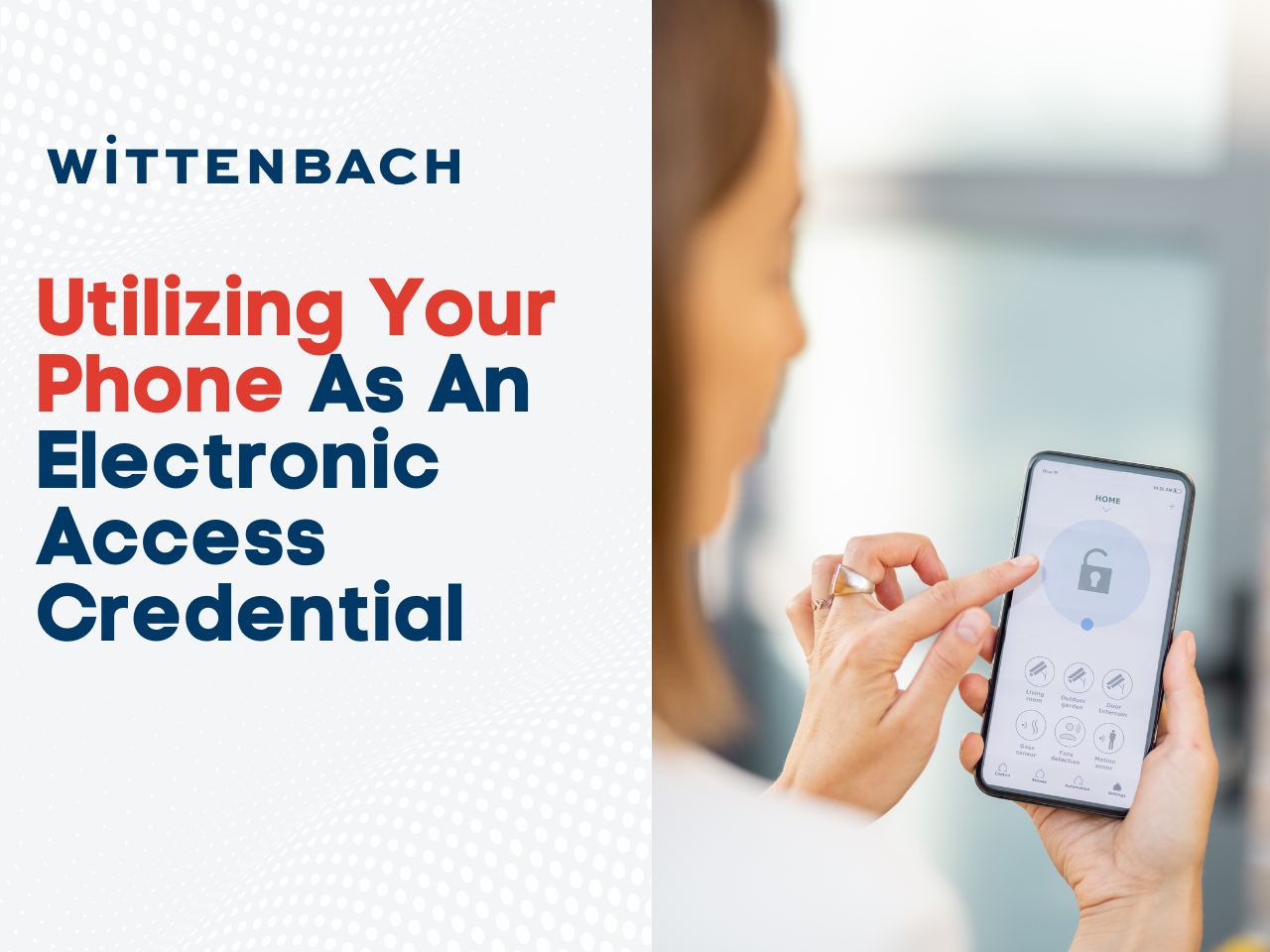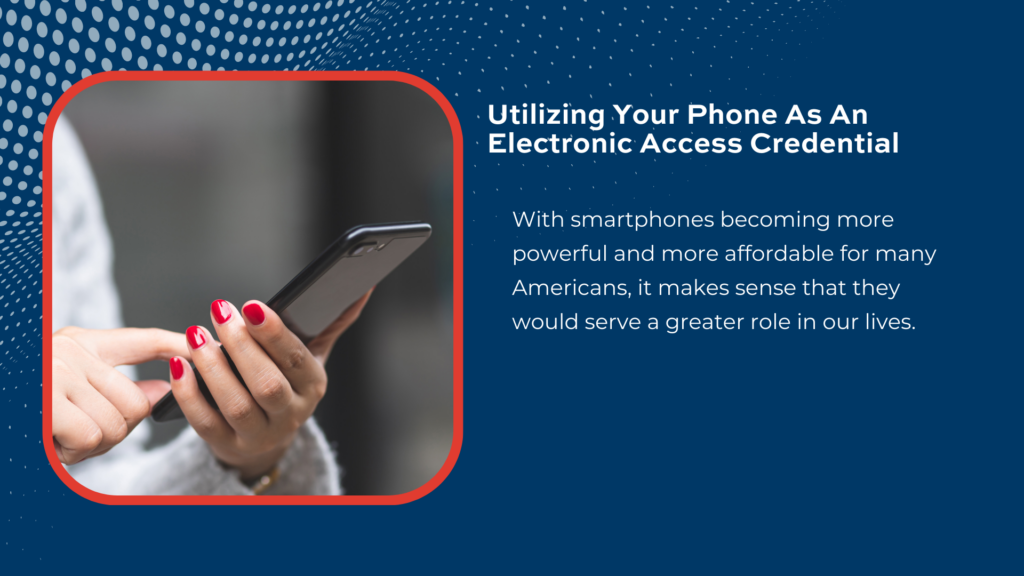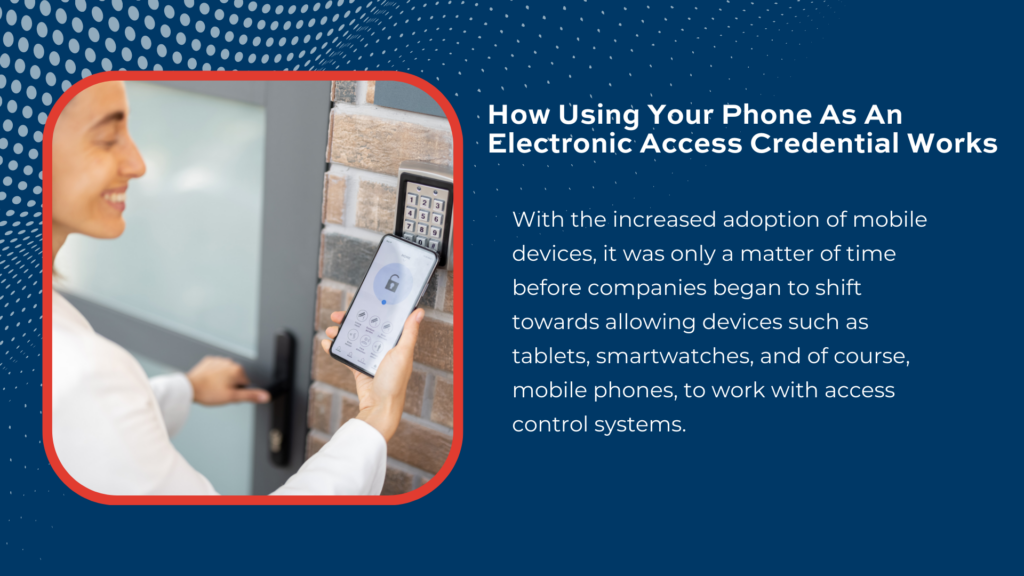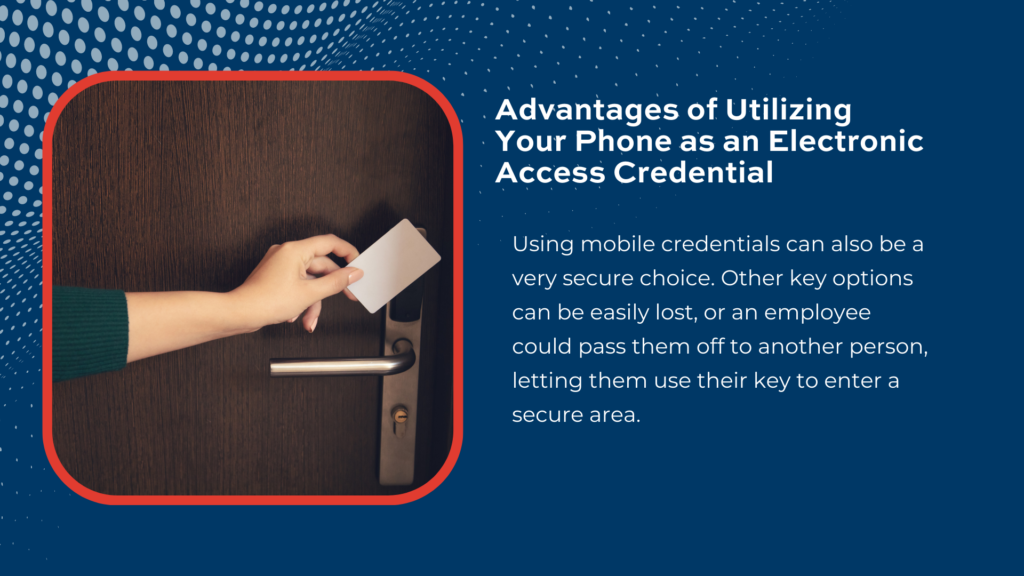Smartphone use is at an all-time high in the U.S., with phone users depending on their smartphones more and more for communication, shopping, entertainment, and staying informed. With smartphones becoming more powerful and more affordable for many Americans, it makes sense that they would serve a greater role in our lives.
But smartphones have another potential: acting as a digital key. Whether you’re looking to get into your apartment building or gain access to your work office, your smartphone can serve as a replacement for a traditional key solution.
Here’s how – and why – you should consider utilizing your phone as an electronic access credential.
How Using Your Phone as an Electronic Access Credential Works
So how does using your phone for electronic access work?
First, let’s talk about traditional access control. With a traditional access control system, access is typically granted in one of these ways:
- A keypad, where a user manually inputs a pin, much like they would when accessing an ATM.
- A keycard, where a card is swiped or touched to a control panel.
- A keyfob, which functions similarly to a keycard, providing access to an area when near a control panel.
With the increased adoption of mobile devices, it was only a matter of time before companies began to shift towards allowing devices such as tablets, smartwatches, and of course, mobile phones, to work with access control systems.
In this model, the physical access control system is paired with a smartphone that acts as a digital access key, in place of a keyfob or keycard.
The phone can interact with an access control panel in a few different ways:
Bluetooth technology allows you to pair a phone with a control panel, without requiring a WiFi connection. It allows for quick, easy connectivity, and signals can be detected from several feet away.
QR code technology involves a user holding their phone up to a QR code scanner, which reads the QR code generated via a mobile app on their phone. QR codes provide quick, contactless access.
NFC (near-field communication) technology uses electromagnetic fields to communicate between two devices. The devices have to be close to each other, and both must have an NFC chip to allow for communication. NFC technology is commonly used for touchless or tap-to-pay credit card payment systems, as well as contactless ITM transactions.
Regardless of the method used, the smartphone acts as a digital key. The majority of users will have a smartphone and carry it with them wherever they go, so it makes for a convenient key.
Advantages of Utilizing Your Phone as an Electronic Access Credential
So why should you consider using phones for electronic access control? Aside from the convenience of nearly everyone carrying their smartphone with them, they offer some compelling advantages over other access methods.
- For one, a touchless access option is safe and convenient. It can minimize the transmission of viruses and germs.
- Affordability is also a big pro of using mobile credentials. It’s a cost-effective solution. There are no keyfobs to buy or keycards to print. There’s also no need to re-print a keycard or re-issue a keyfob since they won’t get damaged or go missing. That can save you money both upfront and in the long term, so it’s easy to see the appeal. Installing a new mobile access system doesn’t have to be expensive either.
- Using mobile credentials can also be a very secure choice. Other key options can be easily lost, or an employee could pass them off to another person, letting them use their key to enter a secure area. In the event a mobile device is lost or misplaced, you can quickly revoke access. There’s also no pin to enter, which means there’s no pin that can be shared with others.
- Mobile access control also allows for easier management. Permission for a user can be quickly revoked. If a user needs access to a new area, it can be provided. If an administrator needs to grant temporary access to a site visitor or a temporary employee, it can easily be done. There’s no worry about having to track someone down and have them turn in a physical key.
- Finally, using mobile credentials can reduce your company’s carbon footprint. There’s no need to print a physical key, especially one that uses single-use plastics.
Having your staff utilize phones for electronic access provides a plethora of benefits. But what if an employee doesn’t have a smartphone? In that scenario, an organization can provide staff with business mobile devices, so even if a staff member doesn’t have a capable cell phone of their own, they can make use of your access control system.
Should Your Organization Use Phones for Access Control?
Is transitioning to a new access control system right for your organization? Allowing your employees and visitors to use their smartphones for access credentials could be a good fit for your organization. It can be a safe, cost-effective, and secure solution. It may also make managing credentials for employees and visitors easier.
If you’re not sure what access control system is right for your organization, we’re here to help. Whether you’re looking to upgrade the tech behind an existing access control system or install a brand new access control system, Wittenbach can advise you on the security solutions that are right for your location. We understand that a one-size-fits-all solution isn’t the right approach. That’s why we will work with you to find the perfect security solutions for your properties.
Ready to get started? Contact us for more information on electronic access control systems.




